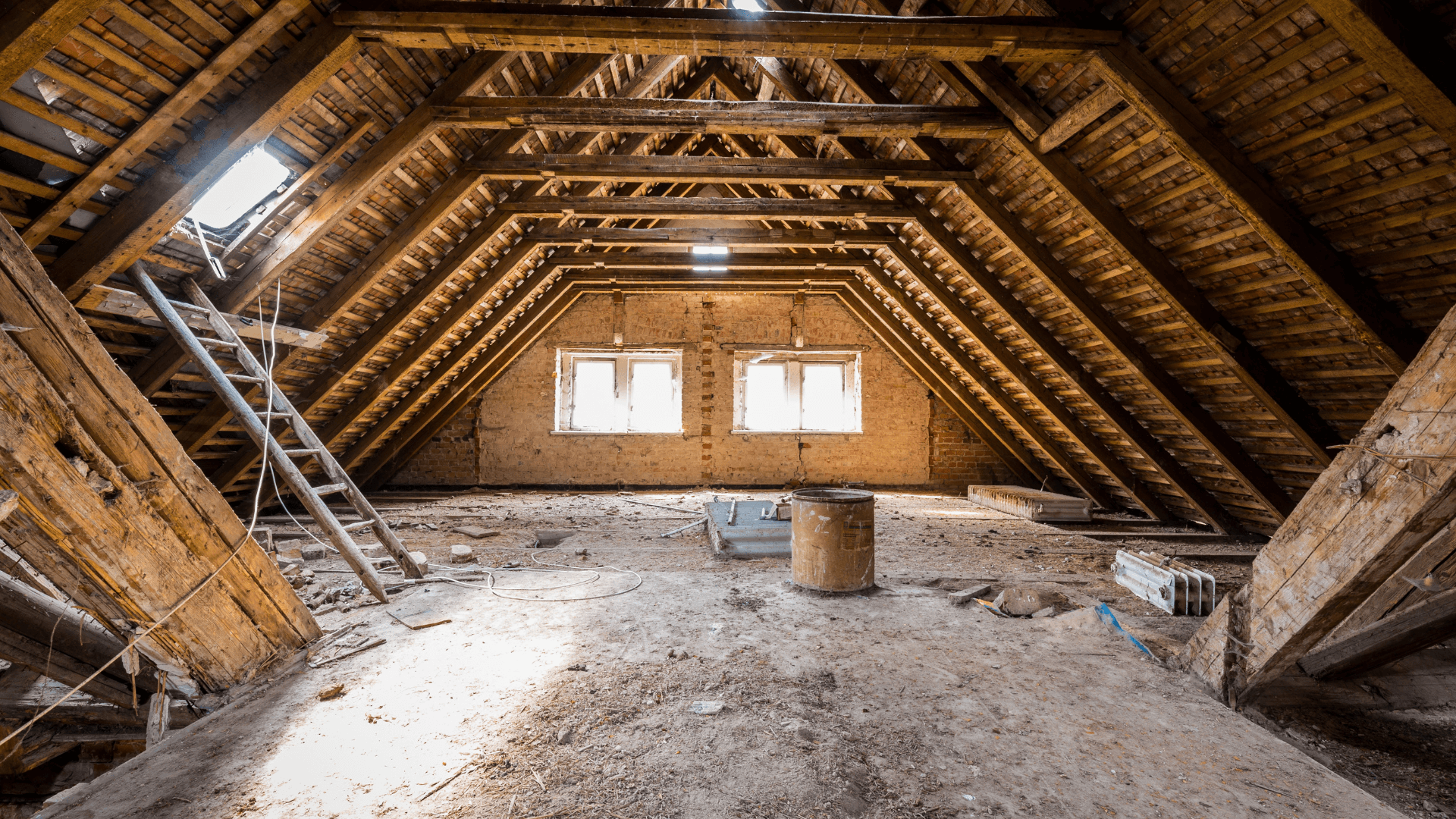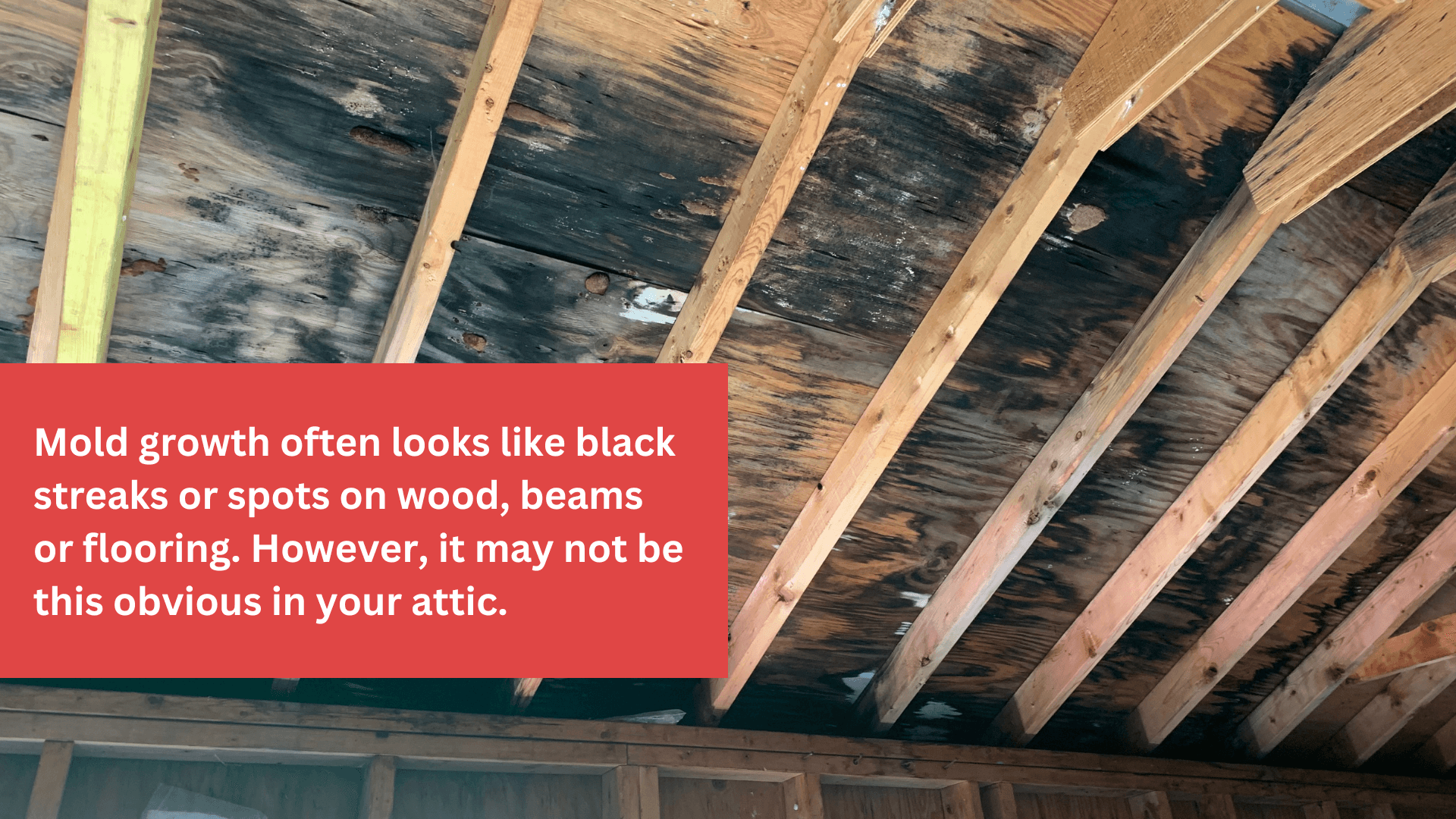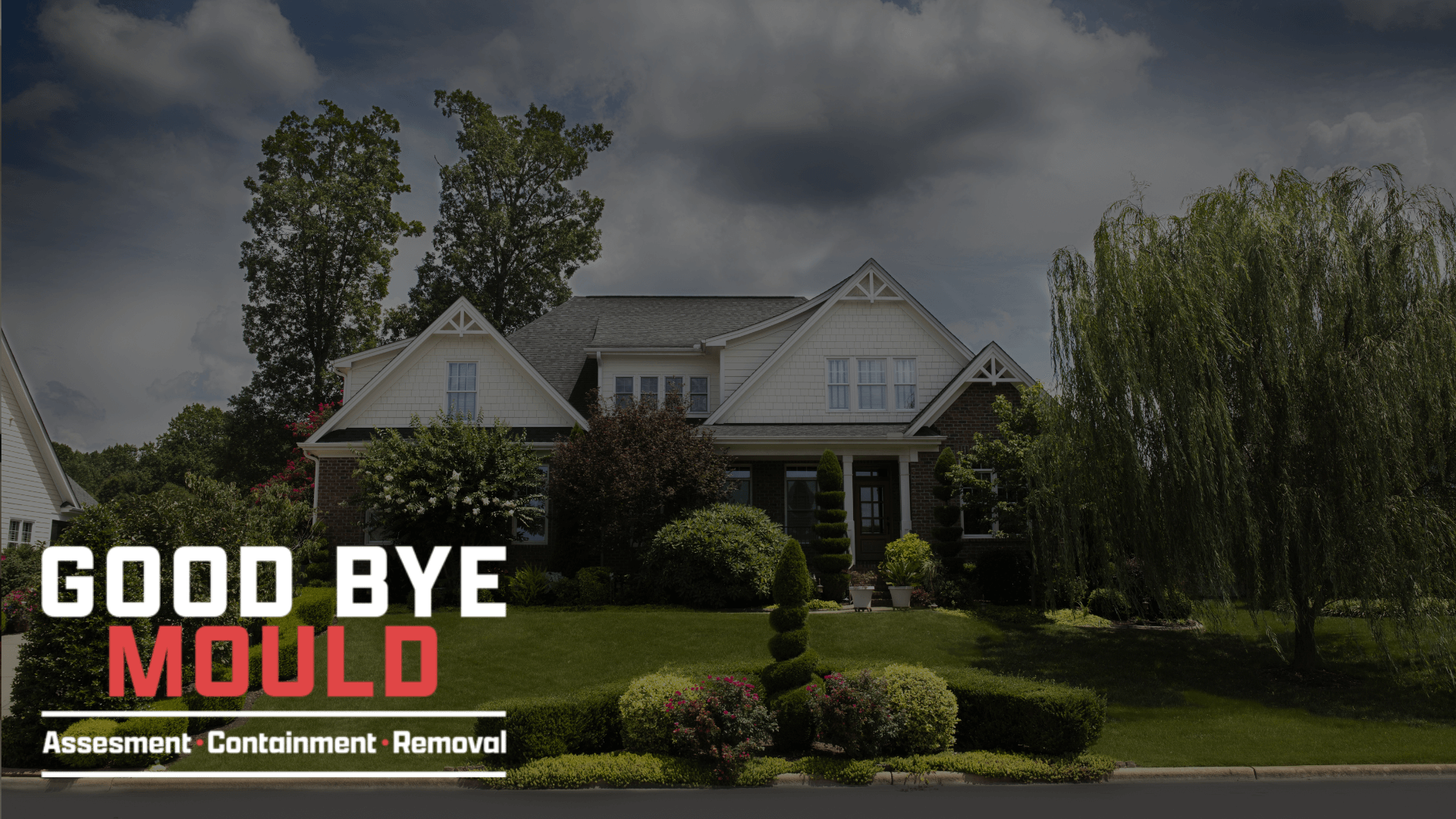If you’ve discovered black mould in your attic or are concerned you may have mould growth in your home, it’s important to get it treated right away. Indoor mould growth can impact your health and damage your home. Attic mould can be difficult to spot–and mould must be removed by a professional to prevent it from spreading. To learn more about black mould in attics, continue reading or contact the mould removal experts at Good Bye Mould today.
Signs of Black Mould Growth In Your Attic

Because most homeowners rarely–if ever–go into their attics, spotting black mould growth in your attic can be difficult. You may not see obvious signs like you would if mould was growing in your kitchen or bathroom. However, even if attic mould growth is more subtle, there are still signs to look out for.
Black Mould in Attic: What to Look For
Musty Odour
You probably have smelled it before; that classic “musty” odour commonly found in old basements or antique stores. A strong, musty smell is often the first indicator of mould growth. If you notice a persistent musty smell in your home but you can’t figure out where it’s coming from, it could be from mould growth in your attic.
Water Stains
Mould loves moist environments and attics are prone to leaks. Your attic may not be insulated properly or your roof could have minor, barely noticeable damage that has caused moisture to seep in over time. If you notice dark or discoloured patches on your ceilings, walls, or insulation, this may indicate past or ongoing water intrusion, providing an ideal environment for mould growth.
Condensation
Excessive moisture in your attic can lead to condensation on windows, pipes, or other surfaces. Condensation promotes mould growth and indicates poor ventilation or insulation.
Warped or Damaged Materials
Mould growth can cause wood, drywall, or other materials to warp, sag, or deteriorate. If you notice any unusual damage to materials in or around your attic, it’s time to call in the professionals to perform an attic inspection. Even if you see mould growth, it’s always best to let the professionals assess the extent of the damage. If mould has damaged floors or support structures in your attic, it may not be safe for you to go into the space.
Pest Infestations
If you have been dealing with insects or rodents in your home and you aren’t sure why, it might be because you have excess moisture in your attic–and therefore, mould growth. Insects and rodents are attracted to areas with moisture and organic material, so a significant pest presence in the attic may indicate an underlying moisture problem.
Increased Energy Bills
Poor insulation or ventilation in the attic can lead to energy inefficiency. Black mould growth may contribute to insulation degradation, causing heating or cooling systems to work harder, resulting in higher energy bills.
Health Symptoms
Indoor mould growth can also impact your health. According to Health Canada, indoor growth is considered a significant health hazard. Moulds are everywhere around us–when they are outside, they are helpful because they break down decaying materials. However, inside your home, mould spores and mould growth can impact your health.

Young children, the elderly and those with underlying health issues are most likely to experience severe symptoms from mould exposure. Even if you do not have any underlying conditions, you might still experience symptoms related to mold exposure, including:
- Excessive coughing
- Shortness of breath and wheezing
- Irritation of the nose, eyes, and throat
- Increase in asthma symptoms
- Headaches or dizziness
- General flu-like symptoms
If you or someone else in your family has been experiencing cold or flu-like symptoms that will not go away, it could be due to mould growth. For any unusual symptoms, see your doctor right away and consider getting your home tested for mould growth.
Black Mould in Attic: What Does It Look Like?
Although you have probably heard the term “black mould” before, black mould is actually not one type of mould but can refer to any mould that appears black in colour. When some people refer to black mould, they are thinking about a specific type of mould called Stachybotrys chartarum.

Stachybotrys chartarum has a bad rap because there were some reports in the past noting a more severe reaction to this type of mould in young children and other at-risk groups. However, according to the CDC, this has not been proven. All types of indoor mould growth can impact your health. And when it comes to mould removal, a professional mould removal company will take the same precautions and steps to ensure all types of mould are safely contained and removed.
While you may have seen pictures of black moulds, there are a number of different ways mould can present. Here are some of the common presentations of mould in attics:
- Black Patches: Black mould often appears as dark patches or spots on surfaces such as wood, drywall, insulation, or ceiling tiles.
- Greenish Hue: In addition to the commonly seen black colour, mould can also have a greenish hue, especially when it’s actively growing and producing spores.
- Fuzzy Texture: Mould colonies often have a fuzzy or velvety texture, which can resemble hair growing on surfaces.
- Slimy Surface: In damp or humid conditions, mould may appear slimy or wet to the touch, especially on non-porous surfaces like metal or plastic. Please note: do not touch mould to test for texture!
- Powdery Residue: Some types of mould, including black moulds, can produce a powdery or dusty residue as they release spores. This residue may be visible on surfaces or in the air.
- Streaks or Stains: Mould growth can create streaks or stains on surfaces, especially if moisture has caused discoloration or damage to materials like wood or drywall.
- Irregular Shapes: Mould colonies may spread out in irregular shapes or patterns, covering large areas or forming clusters across surfaces.
If mould growth in an attic is left long enough without homeowners noticing, it may begin to spread to other areas of the home. However, mould growth is sometimes contained in the attic for long periods of time and therefore, is difficult to find. That’s why if you have noticed any of the signs or symptoms above, or even noticed a “small” patch of mould in or around your attic or on your ceiling, it’s important to call in the professionals to book a mould inspection right away.
Black Mould In Attic Removal
Good Bye Mould offers the best attic black mould removal Kitchener and the surrounding areas have to offer. If you have recently purchased a new home and are concerned about what may be lurking in your attic, or have noticed signs that your home may have mould growth, you can rely on our experienced IICRC certified technicians to assess and remove any and all mould growth in your home.
The first step to removing black mould is to perform an air quality test. An air quality test determines if mould is growing in your attic and tells us the extent of the mould growth problem so that we can create an accurate and effective removal plan.
All of our air quality and mould testing includes:
- Infrared thermal imaging and moisture detection
- Full lab report
- Mould swab samples
After we have assessed the mould growth in your home, our professional team will begin the removal process. When you choose to work with Good Bye Mould for your attic mould removal, here’s what you can expect:
- We use the best and latest equipment and technology to address any mould we find. This includes the use of high-quality, modern equipment such as infrared thermal imaging, moisture meters, and air quality testing.
- After the attic mould assessment has been completed, our team will securely contain the affected area to ensure that mould does not spread to other areas of your home during the removal process.
- Finally, it’s time for mould removal! Our experienced and certified technicians will expertly remove all black mould found in your attic. Check out the video below to see attic mould removal in action.
We understand that finding mould in your home can feel stressful and overwhelming. We take every step necessary to ensure the process goes smoothly right from your first phone call to the clean-up after mould removal is complete.
Black Mould In Attic? Rely On The Experienced, Professional Team At Good Bye Mould For Expert Assessment & Removal!

Discovering black mould in your attic can be an incredibly stressful and overwhelming situation for homeowners–you may be worried about damage to your home, moisture issues and how mould growth can impact your health. We understand that no one wants to find mould in their home, and that’s why our mould assessment and removal services aim to help families feel safe and comfortable in their homes again.
At Goodbye Mould, we care about the health and safety of you and your family. We use the latest technology and equipment to ensure the safest and most efficient mould containment and removal. We’re committed to 100% customer satisfaction. We have a 5-star rating on Google and countless satisfied customers.
“We recently moved into an older home that had some areas of concern for our family in regards to possible mold. Rick immediately returned our call, & set up an appointment. During our appointment, His wisdom, & diligence provided such peace of mind as he could tell us exactly what we were dealing with, thankfully it was only a small area— he explained the cause for the area of moisture, & how to fix it! Thank you Rick!!”
-Amanda Lamme Google Reviews ★ ★ ★ ★ ★
If you are in need of the best black mould removal services in Kitchener, Waterloo and the surrounding areas, get in touch with the experts at Good Bye Mould today. We would be happy to talk with you about expert solutions to your attic mould problem.

